Rock Art Conservation
Dr Stan Beckensall
Every time I turn my thoughts to this, I'm afraid that I despair, as resources seem to be geared to re-recording what we have and little to preserving it. I went with our RAMASES English Heritage group to Sweden, the final meeting of this group that was to direct work on recording and preserving rock-art, where, amongst other things, we had a talk by a Norwegian researcher who was investigating the effect of lichens on rocks. This was interesting, although her conclusions were rather disappointing for those looking for an easy solution to the problem of erosion. She has looked at the effects of lichen under laboratory conditions and decided that some lichens did not damage the rock, but that others certainly did. Some lichens offered some protection.
There was concern about the effects of acid rain – mainly from British industry. Other causes of concern were obvious and well-documented, such as animals and people walking over the surfaces, of deliberate vandalism, of initials claiming cheap immortality - and many more.
It was obvious that something needed to be done, and at a Colloquium arranged by UNESCO, representatives of the major rock-art countries got together
in France later to draw up a programme to make governments aware of what the problems of rock-art protection were. As representative from Britain I
found this interesting, but the resulting document could have been written by any one of us, showing how clear the problems were for all of us.
The question arising from this was whether it would make any difference just to know?
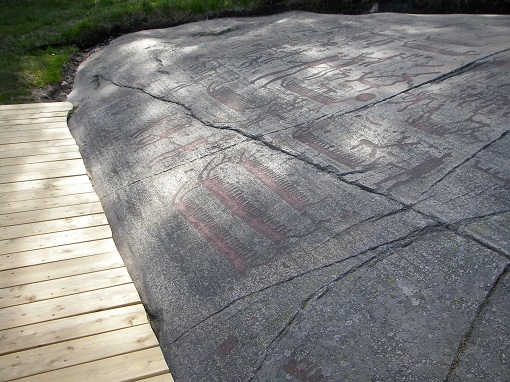
Figure 1: Fossum rock art panel Sweden.
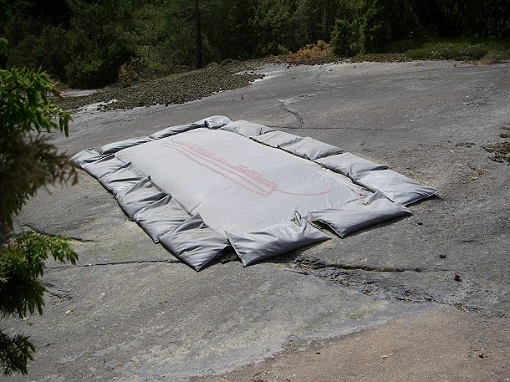
figure 2: Scandinavian method of "parked" rock art
Some interesting work had already been done in Scandinavia, such as 'parking' a rock surface by covering it over with a picture on the cover of what was covered Figure 2. This would give it a rest. In Britain we have lagged behind in this kind of work, and only Kilmartin in Argyll had made a sensible effort to display and preserve rock art. At Kilmartin Figure 3. the whole of the archaeological landscape has been considered in deciding what to show visitors – a big task as the landscape includes cairns, standing stones, and considerable outcrops of rock-art. It is a working agricultural landscape. Sites have been protected by fences, places have clear directions to them, and there is information on site about what is to be seen there. As it is so carefully done, tourists seem to respond in kind by helping to preserve the sites. There is also a good museum which is a research centre, and further helps understanding.
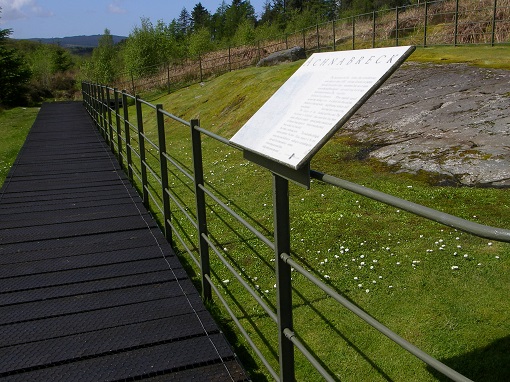
Figure 3: Kilmartin Argyll with good viewing access and protection of
valuable rock art panels.
Northumberland, although the rock-art has been known for many years before this, has nothing like it. If a site is revealed and documented, its being given a formal recognition as an ancient monument is not much use unless there are measures to protect it.
There has been, however, more attempt to describe fully the rock and its environment, which is essential if we are to understand how to preserve it. The kind of sandstone, its slope, the vegetation around it are all to be taken into account when considering preservation. For example, pine needles are acidic, yet the site at Buttony was allowed by the County to be covered with coniferous forest Figures 4 and 5.
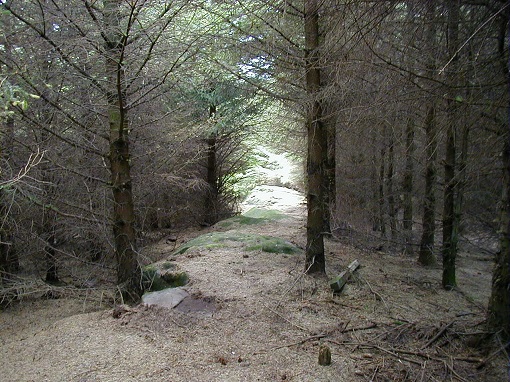
figure 4: An example of poor managment of rock art at Buttony Northumberland, surrounded by conifirous trees.
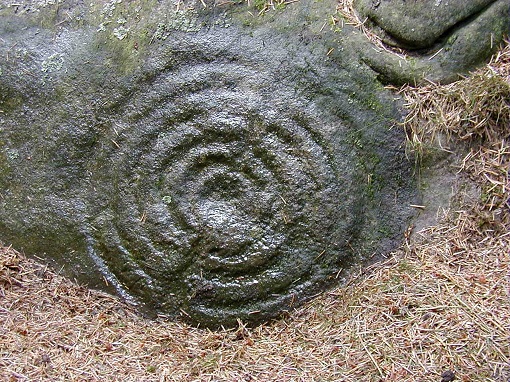
figure 5: rock art motif obscured by pine needles at Buttony.
Chatton Park Hill Figure 6. with some of the finest rock-art in Europe, had cattle and sheep wandering all over it until DEFRA gave a grant to the farmer to keep them off it. At the time authorities were tut-tutting about those of us who used responsible rubbings as a basis for accurate recordings of the motifs. What about the action of frost, ice and fire?
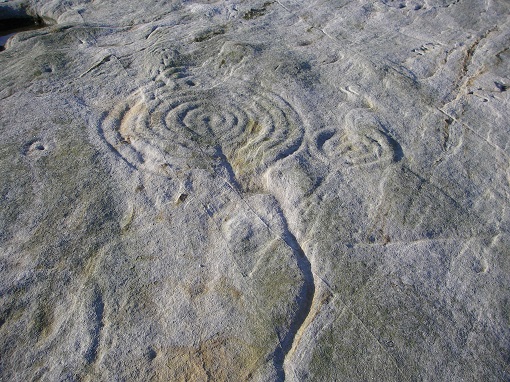
figure 6: Chatton Park Hill Northumberland.
There comes a point when we have to make a decision on how to preserve these ancient markings, and we know that we cannot preserve them all. Some should be open to view to satisfy public curiosity, with good displays to raise awareness of how important this part of our heritage is. Others should be covered in such a way that they can be uncovered easily for further inspection. We do not want people to go digging around to find the panels. The sites themselves should be displayed in such a way that it deters people from walking all over the rocks. At Kilmartin, for example, they have platforms that make the motifs easy to see.
All this requires money, yet prehistoric rock gets very little. Farmers are reluctant to take on the role of curators by themselves, but will help when it is worth their while. Think of how much money English Heritage will spend to preserve one building, and think of what that could do to help conserve Northumberland’s rock art
Dr Stan Beckensall August, 2017





